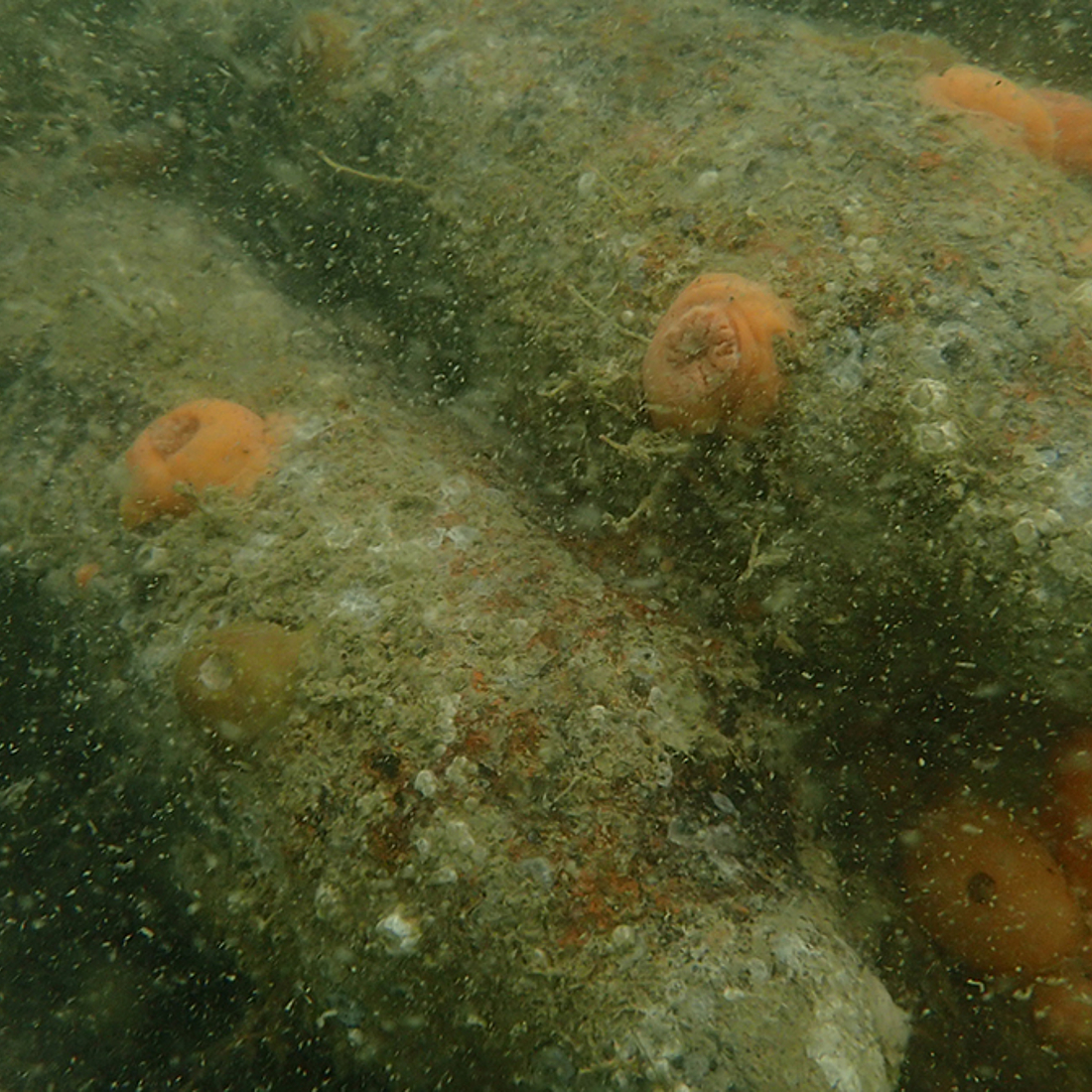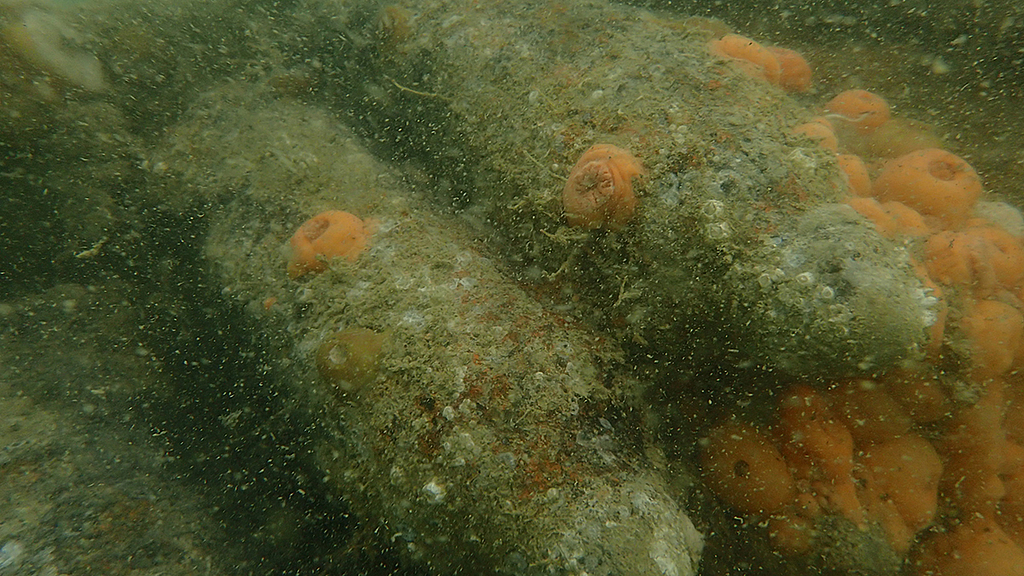Report from the Heincke expedition of 6-11 Apr. 2021
April 5, 2021
-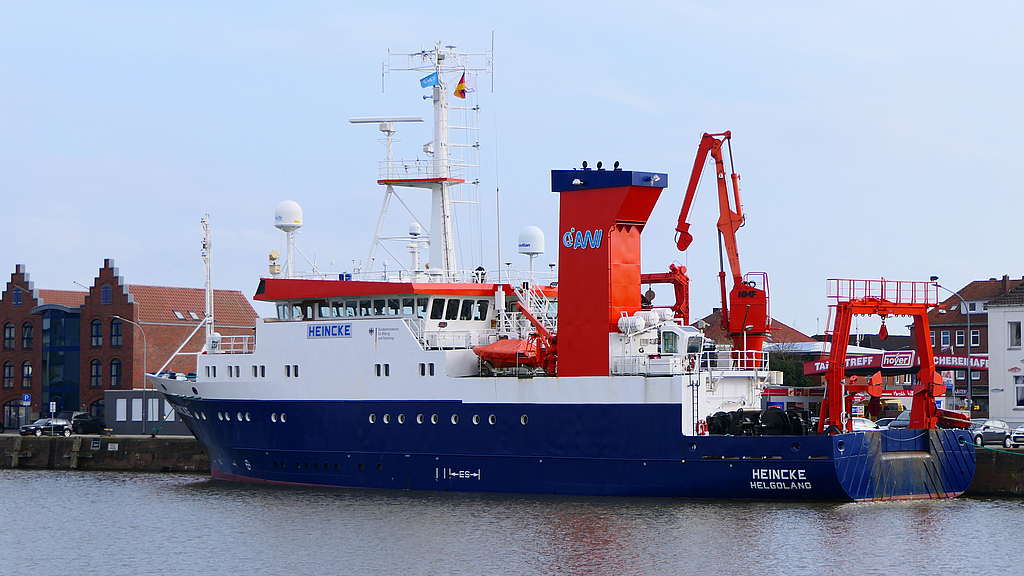
The research vessel HEINCKE, Alfred-Wegener-Institut, Helmholtz-Zentrum für Polar- und Meeresforschung. © Cornelia Riml, German Maritime Museum
Following strict coronavirus protocols and after negative Covid tests, 10 scientists assemble in Bremerhaven to board the HEINCKE, the research vessel of the Alfred Wegener Institute, Helmholtz Centre for Polar and Marine Research (AWI). They represent a diverse range of fields, from marine biology and marine chemistry to underwater archaeology, research diving, public history and oceanography.
After consulting with the captain, the expedition leader gives an evening update: a storm has hit Bremerhaven and the North Sea, bringing icy winds, rain and hail, with temperatures of 2 C; the forecast is for force 10 winds and waves of 7-8 metres – the expedition launch will have to be postponed.
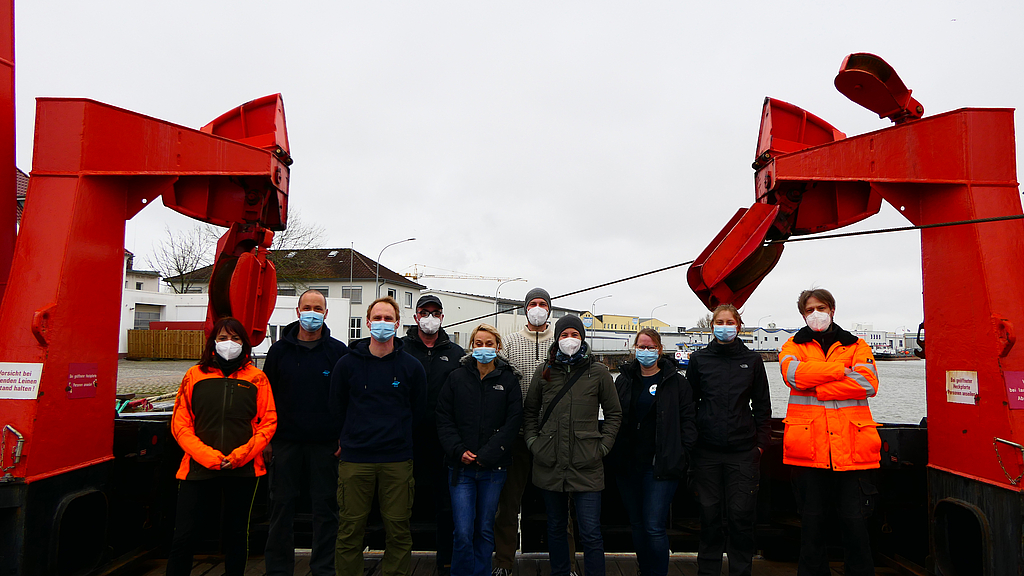
© Cornelia Riml, German Maritime Museum
The research vessel HEINCKE, Alfred-Wegener-Institut, Helmholtz-Zentrum für Polar- und Meeresforschung.
April 6, 2021
-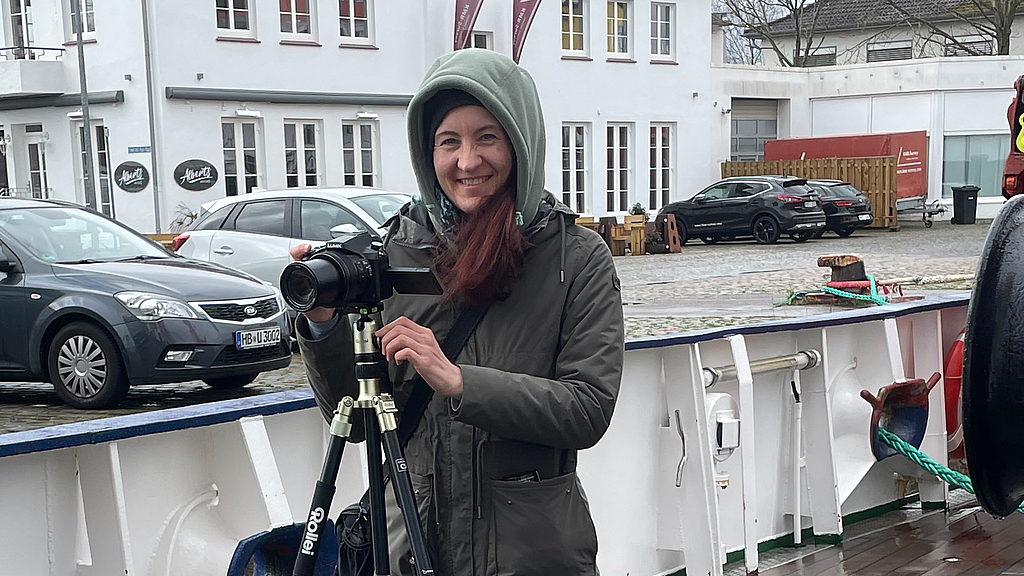
Cornelia Riml filming on the research vessel HEINCKE in the port in Bremerhaven. © Ute Marx, Alfred Wegener Institute, Helmholtz Centre for Polar and Marine Research.
The weather situation is unchanged; we await further developments. That is not to say nothing is happening on board: the crew take us through the ship’s critical safety drills, we discuss the next stages of the expedition and coordinate our PR for media outlets expecting us to launch. We also create photo and video material about the project for the travelling exhibition, conduct telephone interviews and sort through what press material we already have.
April 7, 2021
-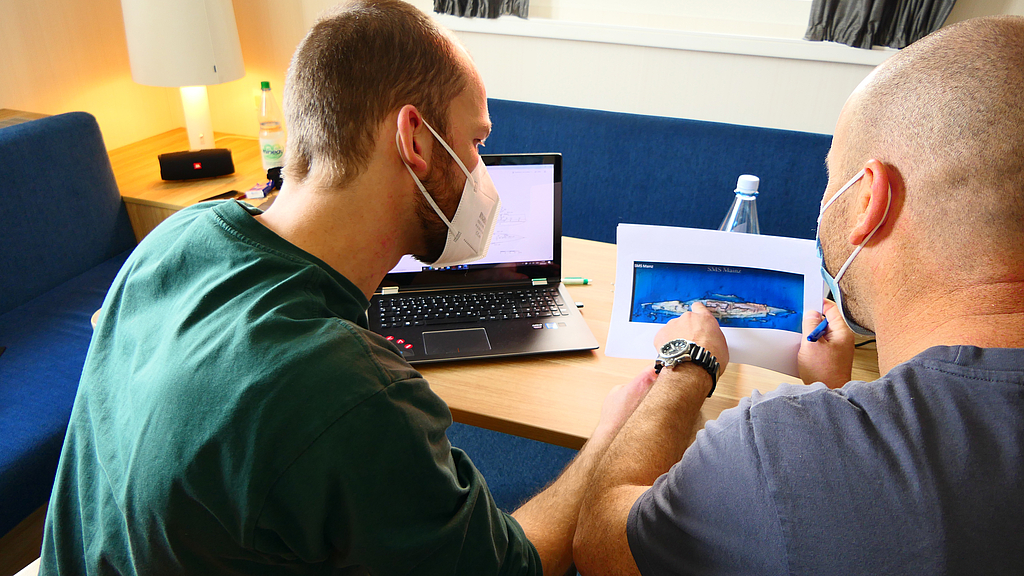
Philipp Grassel and Sven van Haelst discuss the wreck position and the diving operation © Cornelia Riml, German Maritime Museum
On our third day in Bremerhaven, conditions allow the ship to be hauled to the Alfred Wegener Institute’s pier. We are to take more equipment onboard, but docking proves a challenge as winds are high even within the port. We are due to launch in the evening if conditions are sufficiently improved.
As part of the expedition, we plan to carry out dives that will allows us to investigate the condition of submerged wrecks and munitions. The dive team prepares the diving equipment while others film and photograph them at work.
On board, tripods are brought on deck so that they can later be positioned close to the wreck. Mounted on them are mussels and samplers that will filter the water. Once we have samples, the lab will analyse them to establish whether TNT degradation products are present.
The launch is now scheduled for 6 a.m. tomorrow. Due to the time lost as a result of the storm, we’ve had to cut two of the wreck sites we’d originally planned to visit from the itinerary. Our primary destination is SMS MAINZ, which liesin waters west of Heligoland.
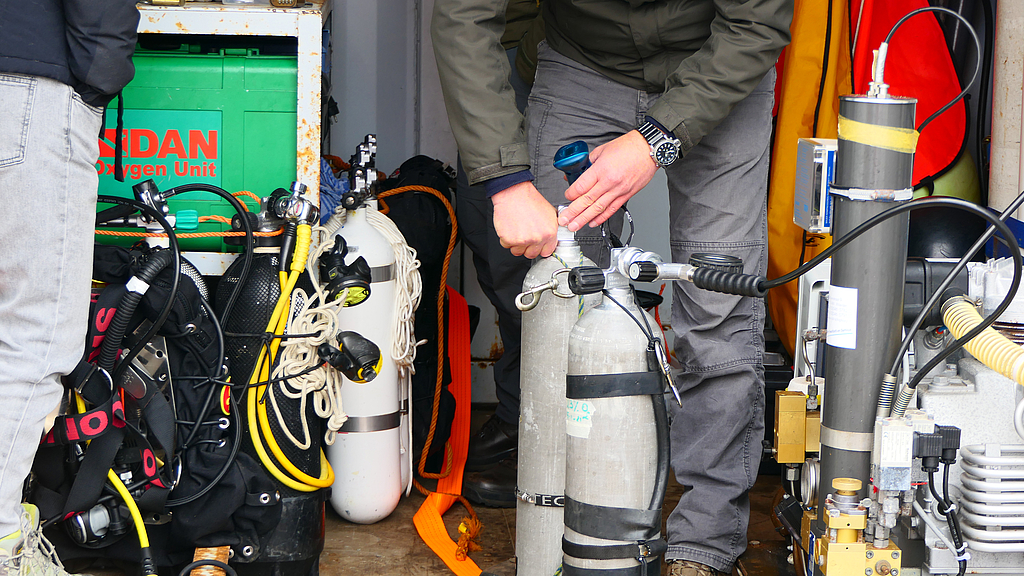
© Cornelia Riml, German Maritime Museum
The diving equipment is being prepared.
April 8, 2021
-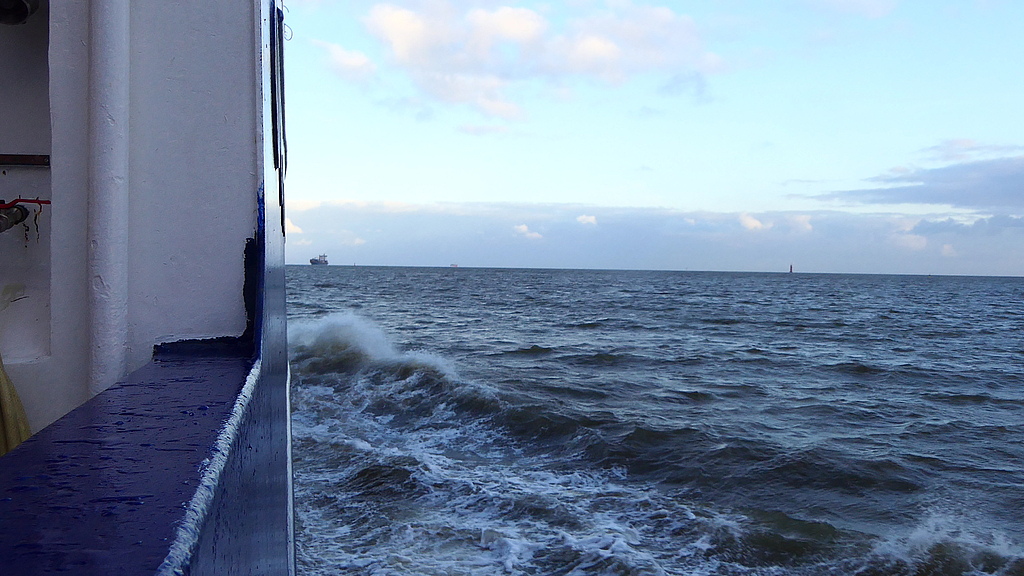
The North Sea at the beginning of the expedition. © Cornelia Riml, German Maritime Museum
At 5:30 a.m., we finally get underway; the launch is captured on film. At around 9:30 a.m., we pass the Roter Sand lighthouse, thus leaving the outer reaches of the Weser river and entering the North Sea. The passing stormis still making itself felt; there are force 6-7 winds and ever larger waves rock the boat. Some members of the team get seasick, things are increasingly subdued on board.
At 3:30 p.m., we arrive at the wreck site’s coordinates. Using a multi-beam echosounder that sends sonar signals down to the seabed, we attempt to locate the 130 m long wreck. The signals are affected by the choppy sea and strong currents, however, making location difficult and time-consuming. It’s important that we get a precise fix on the wreck so that we know where any remaining munitions might be.
The stormy sea means the HEINCKEcontinues torockin the night. At around 2:30 a.m., a turning manoeuvre in heavy swell causes the boat to tilt, jolting the crew awake. Winds reach gale force 9 (75-88 km/h). Thankfully, the rest of the night is then calmer.
April 9, 2021
-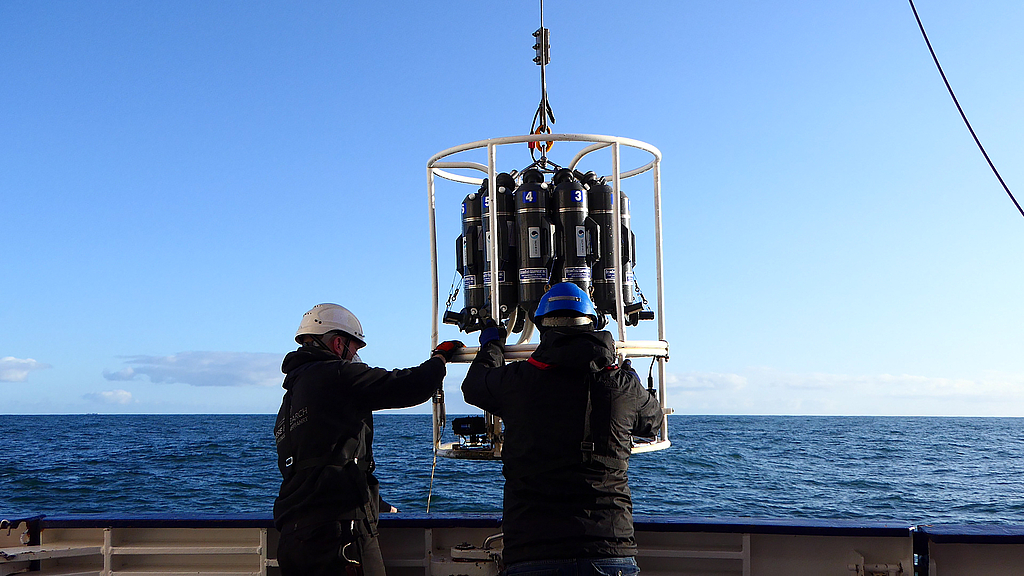
Water samples are taken. © Cornelia Riml, German Maritime Museum
The storm slowly subsides and we can finally locate the wreck. We coordinate the next stages of our research and filming – everything has to be carefully synchronised.
Using a bottle rosette and an oceanographic measuring device known as a CTD (conductivity – temperature – depth), we take samples of the water from various depths.
The dive team is able to complete their first dive to the wreck. Conditions are difficult underwater too: with the sea still churned up after the storm, visibility is just 15 cm.
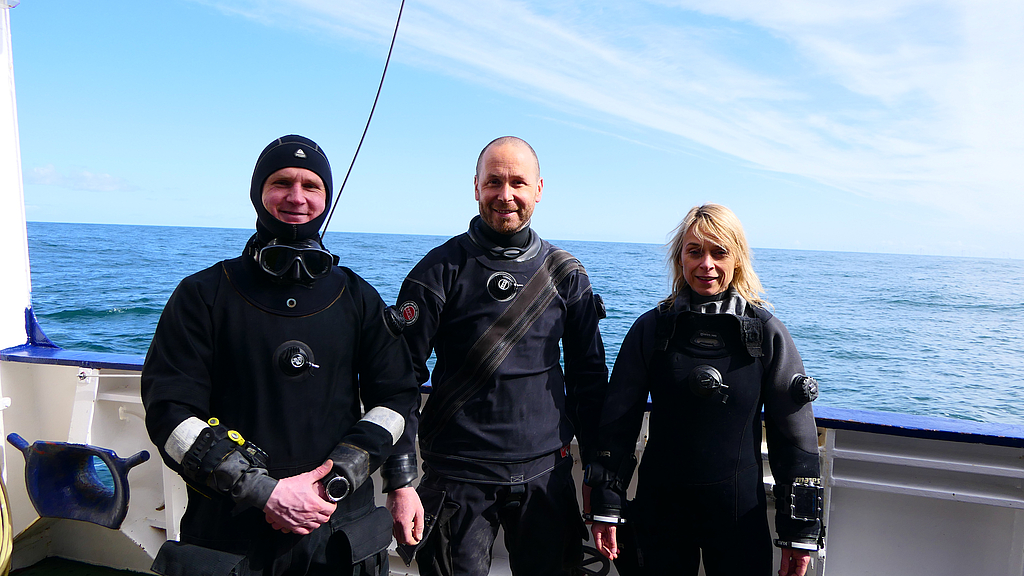
© Cornelia Riml, German Maritime Museum
The diving team of the Vlaams Instituut voor de Zee.
April 10, 2021
-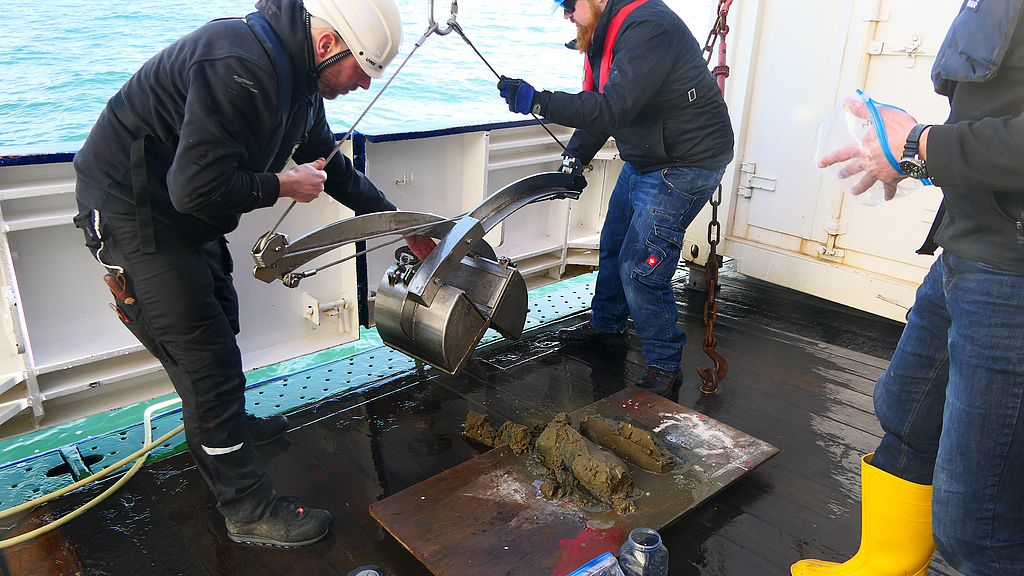
Sediment samples are taken from the seabed. © Cornelia Riml, German Maritime Museum
Today, conditions are perfect for our research, with a comparatively calm sea and blue sky.
Using the grab sampler, we take sediment samples and biological samples from the seabed, 30 m down. These will give us information about pollutant levels around the wreck.
The net is cast out in order to catch flatfish (dab). Dab tend to stay in one particular area, meaning those in the vicinity of the wreck could have been exposed to hazardous substances. If they are present in the fish, these substances could end up in our own food chain.
The tripods bearing mussels and passive samplers are brought out and the dive team is able to conduct two more successful dives. We discuss the underwater video footage and make some initial assessments.
Despite losing so much time, we were in the end able to complete all the work planned for the wreck site. Now we are heading back to Bremerhaven armed with new research material and exhibition content.
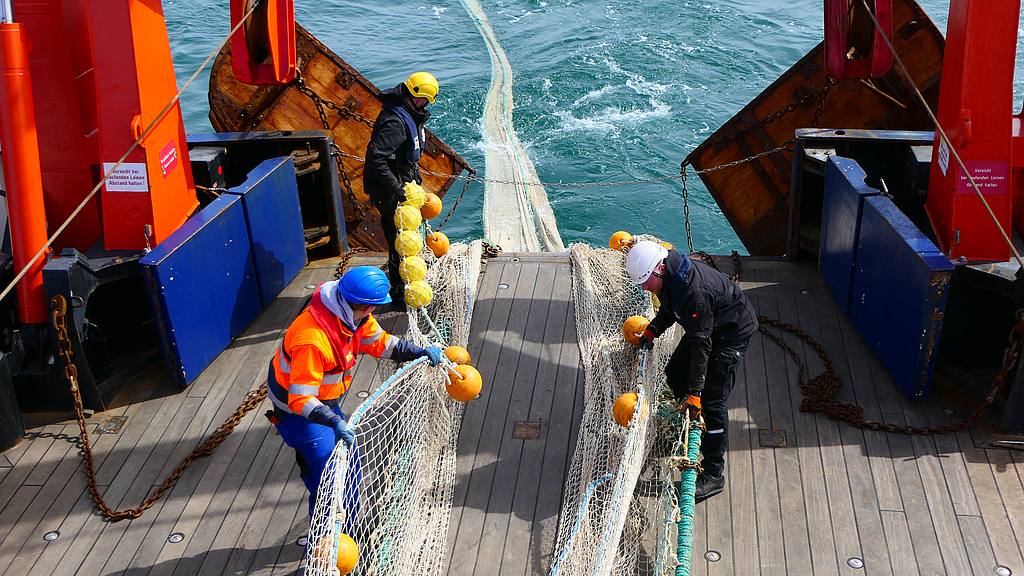
© Cornelia Riml, German Maritime Museum
The fishing net is thrown out.
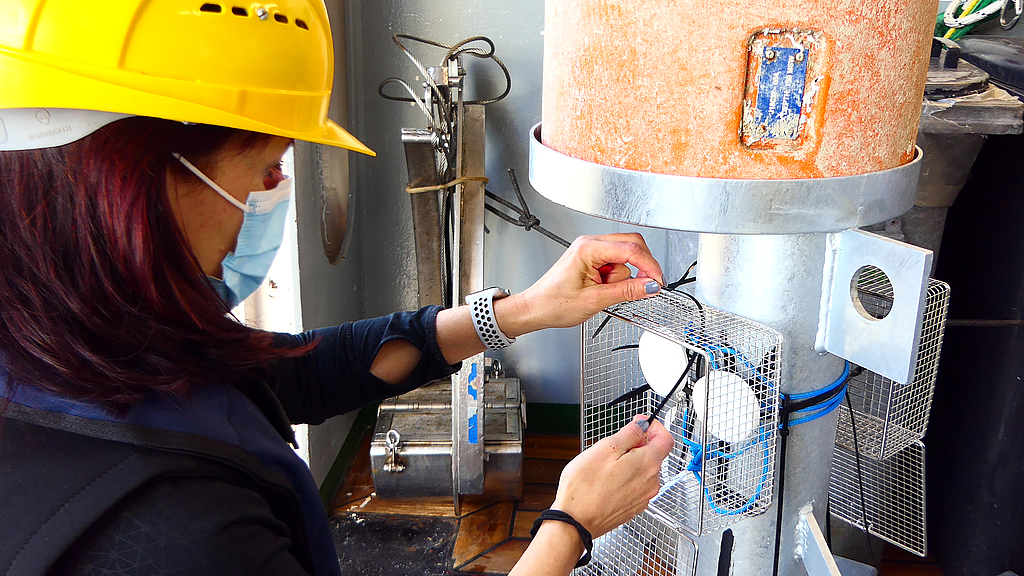
© Cornelia Riml, German Maritime Museum
The tripots are being prepared.
April 11, 2021
-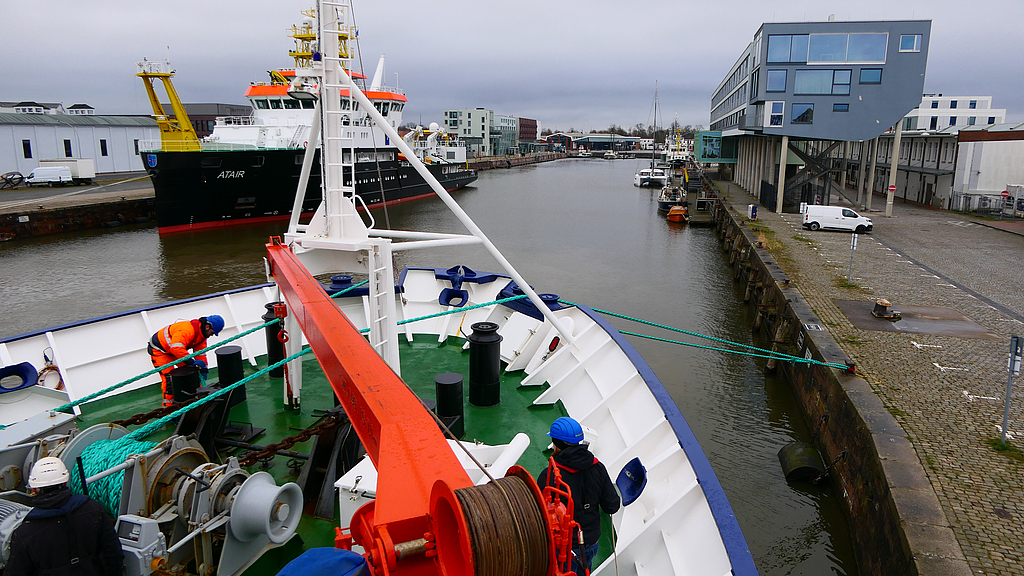
The HEINCKE returns to port. © Cornelia Riml, German Maritime Museum
On our return, a press conference is held on board the HEINCKE, with strict coronavirus protocols in place. There is a lot of media interest and it is great to be able to present the project. Next, we can start evaluating the material – and planning new expeditions.

